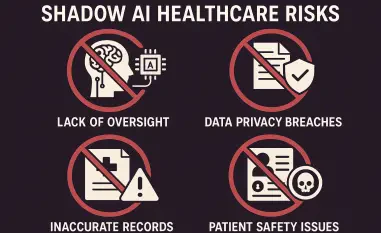Malik Haidar, a cybersecurity expert renowned for defending multinational corporations against various digital threats, offers his insights on the recent Chrome 137 update. With specialization in analytics, intelligence, and a unique ability to integrate business perspectives into cybersecurity strategies, Malik is positioned to unravel the complexities of the vulnerabilities patched in this latest release. This engaging interview delves into specific vulnerabilities, the broader implications for cybersecurity, and reflections on browser security.
Can you explain what the recent Chrome 137 update addressed in terms of security vulnerabilities?
The Chrome 137 update concentrated on patching three crucial vulnerabilities, two of which were recognized as high-severity issues reported by diligent external researchers. These updates were vital in ensuring that the browser maintained its security integrity amid evolving cyber threats.
What details are provided about CVE-2025-6191?
CVE-2025-6191 is identified as an integer overflow vulnerability within the V8 JavaScript engine, a critical component that powers Chrome’s vast functionalities. The researcher who discovered this bug was rewarded with a $7,000 bounty by Google, underscoring the importance of community involvement in enhancing cybersecurity.
Could you describe the vulnerability identified as CVE-2025-6192?
Certainly. CVE-2025-6192 is a use-after-free flaw affecting Chrome’s Profiler component. This kind of vulnerability can lead to erratic program behavior, including crashes or even code execution. The dedicated researcher who detected this flaw received a ,000 reward from Google, highlighting the significance of reporting and addressing such vulnerabilities.
Which Chrome versions include the patches for these vulnerabilities?
The vulnerabilities were effectively addressed in Chrome versions 137.0.7151.119/.120 for Windows and macOS platforms, and version 137.0.7151.119 for the Linux environment, showing Google’s comprehensive approach to maintaining cross-platform security.
Why are memory bugs in Chrome considered attractive targets for attackers?
Memory bugs are particularly attractive because they can potentially lead to remote code execution, which is a powerful tool for attackers. With the ability to execute arbitrary code, attackers can compromise sensitive data, deploy malware, and gain control over systems, making these flaws incredibly dangerous.
Are there any known reported instances of these vulnerabilities being exploited in the wild?
Google’s updates have not reported these specific vulnerabilities being actively exploited in the wild. However, other recent Chrome vulnerabilities have been targeted prior to detection, emphasizing the need for vigilant security practices and timely updates.
Can you provide an example of a recent zero-day vulnerability in Chrome and its consequences?
A notable example is CVE-2025-2783, a sandbox escape flaw exploited in cyber espionage campaigns against Russian organizations. This zero-day vulnerability was used in one-click attacks, highlighting both the sophistication of the exploit and its targeting capabilities.
Which organizations were identified as being affected by the exploitation of CVE-2025-2783?
Various Russian organizations were targeted by attackers exploiting CVE-2025-2783 during a significant cyberespionage campaign. The focus on specific geographic and industrial sectors suggests strategic motives behind the attacks.
What insights have been provided about the group referred to as Team46?
The activities of Team46 were brought to light by Positive Technologies, which linked the group to Trinper, a notorious backdoor associated with the TaxOff hacking organization. Their use of zero-day exploits and sophisticated malware suggests a deliberate long-term strategy aimed at maintaining persistence in compromised systems.
What broader implications do these findings have for browser security and user safety?
These vulnerabilities underline the constant threats faced by browsing environments and the crucial need for robust security measures. They highlight the necessity for regular updates and active collaboration between companies and independent researchers to safeguard user data and privacy.
Were any other browsers affected by vulnerabilities similar to those found in Chrome?
Yes, Firefox was reported to have a similar defect as identified in Chrome’s CVE-2025-2783. This indicates a trend of comparable vulnerabilities across different platforms, necessitating vigilance in security practices regardless of specific browser choice.
What advice is provided to users regarding these security vulnerabilities?
Users are strongly advised to update their browsers promptly to mitigate risks associated with these vulnerabilities. Regular updates are essential to protect against potentially harmful exploits that could compromise personal data and security.
Are there any notable differences between the Chrome vulnerabilities patched in this update and those addressed in previous updates?
The recent patch in Chrome 137 underscores a focus on critical engine components like V8 and operational elements like the Profiler, a shift from addressing broader issues in earlier updates. This tailored approach reflects an adaptive response to evolving, sophisticated threat landscapes.













